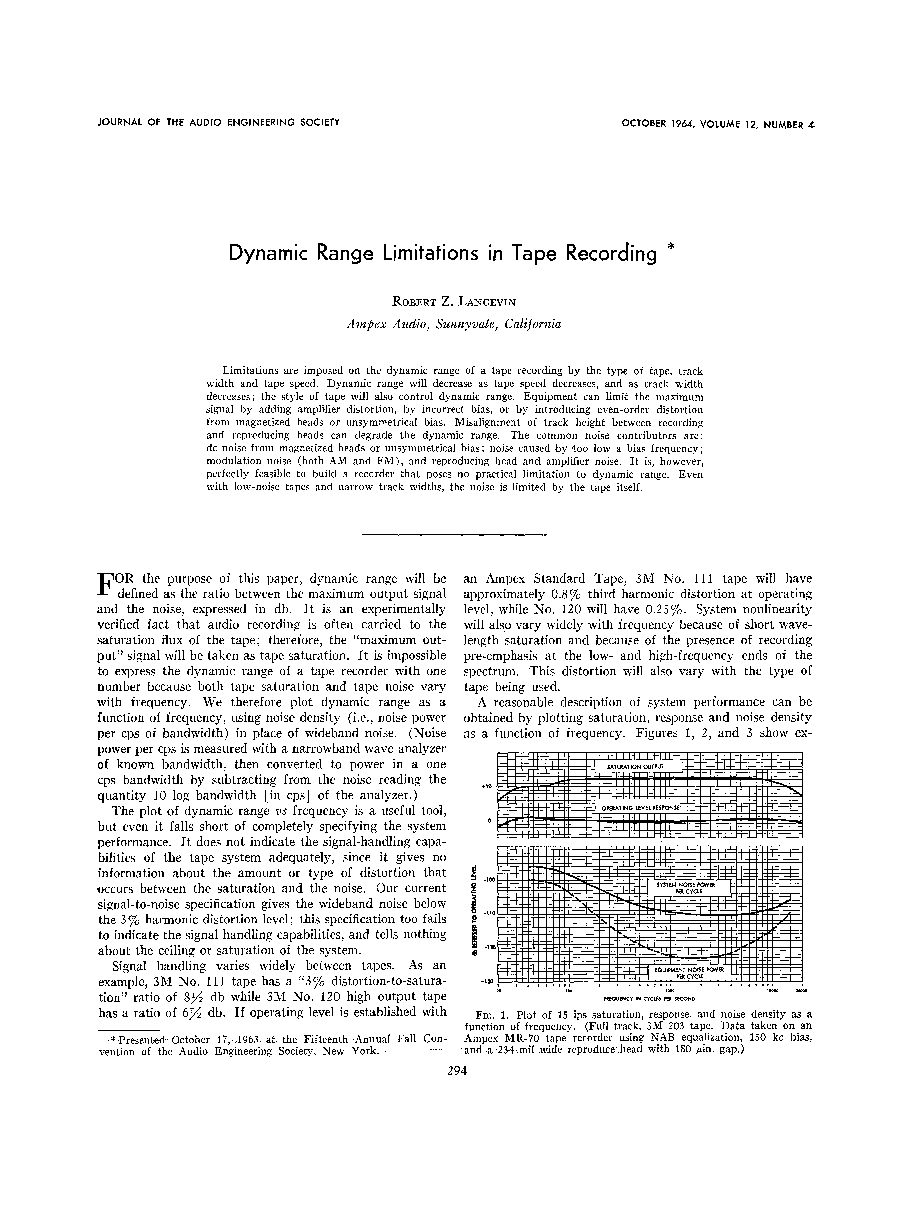Home / Publications / E-library page
You are currently logged in as an
Institutional Subscriber.
If you would like to logout,
please click on the button below.
Home / Publications / E-library page
Only AES members and Institutional Journal Subscribers can download
Limitations are imposed on the dynamic range of a tape recording by the type of tape, track width and tape speed. Dynamic range will increase as tape speed decreases, and as track width decreases; the style of tape will also control dynamic range. Equipment can limit the maximum signal by adding amplifier distortion, by incorrect bias, or by introducing even-order distortion from magnetized heads or unsymmetrical bias. Misalignment of track height between recording and reproducing heads can degrade the dynamic range. The common noise contributors are: dc noise from magnetized heads or unsymmetrical bias; noise caused by too low a bias frequency; modulation noise (both AM and FM), and reproducing head and amplifier noise. It is, however, perfectly feasible to build a recorder that poses no practical limitation to dynamic range. Even with low-noise tapes and narrow track widths, the noise is limited by the tape itself.
Author (s): Langevin, Robert Z.
Affiliation:
Ampex Audio, Sunnyvale, CA
(See document for exact affiliation information.)
Publication Date:
1964-10-06
Import into BibTeX
Permalink: https://aes2.org/publications/elibrary-page/?id=728
(473KB)
Click to purchase paper as a non-member or login as an AES member. If your company or school subscribes to the E-Library then switch to the institutional version. If you are not an AES member Join the AES. If you need to check your member status, login to the Member Portal.

Langevin, Robert Z.; 1964; Dynamic Range Limitations in Tape Recording [PDF]; Ampex Audio, Sunnyvale, CA; Paper ; Available from: https://aes2.org/publications/elibrary-page/?id=728
Langevin, Robert Z.; Dynamic Range Limitations in Tape Recording [PDF]; Ampex Audio, Sunnyvale, CA; Paper ; 1964 Available: https://aes2.org/publications/elibrary-page/?id=728